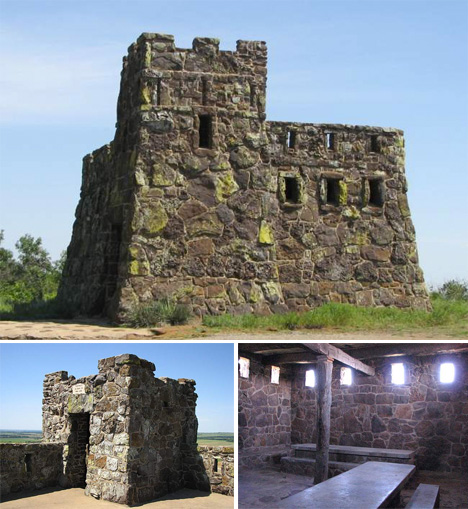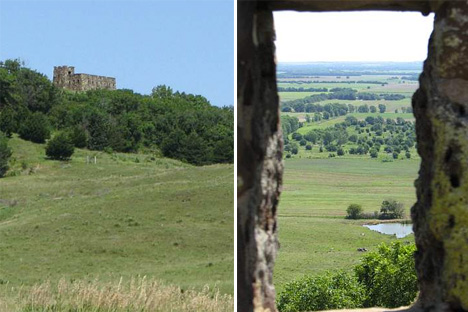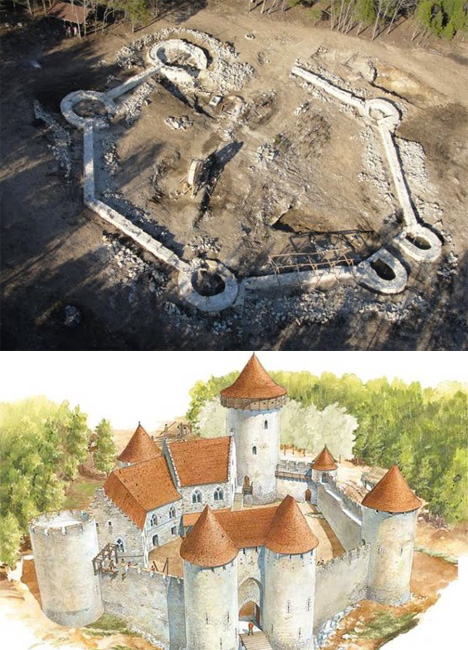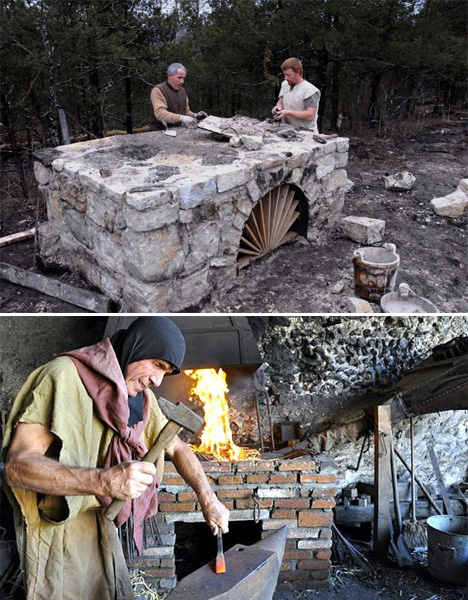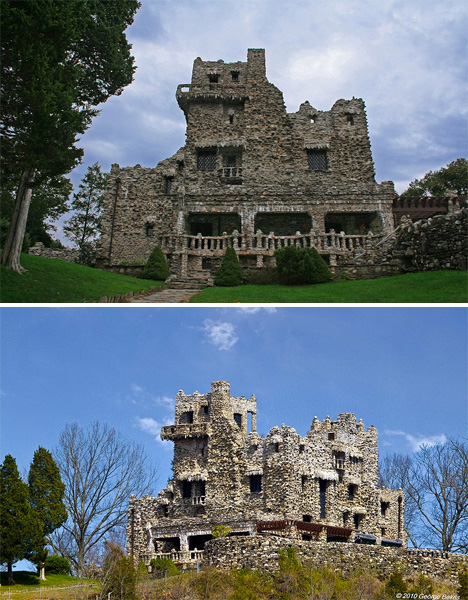Coronado Heights Castle, Kansas
Did Spanish explorer Francisco Vasquez de Coronado really discover the mythical ‘Seven Cities of Gold’ in Kansas in the 1540s? Coronado went on an expedition across the flatlands with hundreds of Spanish soldiers and native American guides, keen on confirming the report of a Franciscan priest that the Native American community of Quivira was really and truly made of gold. It’s unknown whether he really scaled the heights of Lindsborg, Kansas, or whether his claims that what he saw there was truly Quivara – though he admitted it was no more than a collection of native huts, and hardly made of gold. But that spot has been named after him, and in the 1930s, a little stone castle was built to commemorate his supposed journey. The castle now contains picnic benches for the tourists who climb the hill.
Ozark Medieval Fortress
This building site in Lead Hill, Arkansas looks like the foundation of a 13th century stone castle. That’s exactly what it is – but it’s being built right now. An amateur archaeologist named Michel Guylot began the backbreaking work of constructing a castle entirely by hand using the techniques and tools of 13th century European castle builders in 2010, and it’s not expected to be completed until 2030. Located on donated land, the project acted as an active demonstration of these techniques for visitors who want to come and watch it in progress. Eventually, the castle was to have 70-foot towers, a six-foot-thick outer wall and a drawbridge. However, it stalled due to financial issues, and officially closed in 2012. Guylot is currently seeking financial backing to get it up and going again.
Gilette Castle, Connecticut
In 1914, actor William Gillette (most famous for his portrayal of Sherlock Holmes on stage) built his dream estate on top of the southernmost of a chain of hills known as the Seven Sisters in Connecticut. The magnificent castle easily rivaled those of Europe, overlooking the Connecticut River from its perch on the ‘Seventh Sister.’ But when Gillette died without any heirs to inherit the property, his will simply directed that the castle not go to any “blithering sap-head who has no conception of where he is or with what surrounded.” The state took over the property in 1943, deeming the entire state Gillette Castle State Park. The castle – which has a fascinating system of hidden mirrors for surveilling the public rooms from the master bedroom – is sadly not what it once was, but still a popular destination after an $11m restoration, drawing some 300,000 tourists per year.
